My Norway Arctic pulk pulling expedition was the first experience I ever had in an extreme cold environment. I had so many questions – how do you train for pulling pulks….what gear is best to take…….how do you have a wee in -30.?
Naturally, I did what anyone would do….turn to Google for answers! But there is so little information available online, especially covering the extra logistics women face in these tough environments.
To do something about this, I have turned to 4 awesome and experienced adventurers who were happy to share their knowledge and advice to help others who are preparing for a Polar or Arctic expedition. Suitable for a weekend cross-country skiing in Sweden to a full-on North Pole crossing.
So here is part 1 in the series – Top tips on preparing and training for an arctic circle pulk pulling expedition.
Make sure you also check out:
- Staying warm on polar and arctic expeditions
- How to go in the snow….and other advice for Arctic & Polar conditions
- What to wear in the arctic & kit list
Before we start….
If you are new to this blog, I’m Bex Band – a full-time UK adventurer and founder of the women’s adventure community Love Her Wild. I’m on a mission to make getting outdoors and going on adventures as easy as possible. You can read more about me here.
If you have any questions, please use the comments box below. And for ongoing tips and inspiration on camping and adventure, make sure you follow me on Facebook and Instagram.
If you are planning a pulk-pulling expedition, I’d suggest starting by watching my short film below from my own Arctic expedition. It will give you a good sense of what I wore, what pulling a pulk is like and the sort of conditions you can expect. This was a 17 day pulk-pulling adventure in Norway in January (things didn’t quite go to plan!):
Wendy Searle
Wendy Searle carried out a solo expedition to the South Pole in 2020. She has completed Polar Expedition training with Hannah McKeand and in training for the South Pole crossed the Greenland Ice Sheet. You can follow Wendy on Twitter and Facebook.
What is your Arctic experience?
I went on the Polar Expedition training course with Hannah McKeand. Run out of Finse, a place which boasts the highest railway station in Norway. The two-week long course is a week of classroom mornings and afternoons out on the frozen lake and a six-day expedition in the remote wilderness around the Hardangervidda National Park. It was beautiful and harsh – we spent a lot of time skiing with pulks uphill and navigating in poor visibility. We saw a few huts shut for the winter, which the Norwegians use as summer cabins, but aside from that, we didn’t see a living thing apart from each other for four days. We came across some Norwegian soldiers doing some training on day 5 – they were terribly camouflaged, and we spotted them from miles off! Actually, we did see one living thing – a little lemming which got into my snack bag and was quite happy feasting in our tent all night!
The next trip is a 570km pulk-pulling expedition across the Greenland Ice Sheet – a big step up, but I’m going with a team I already know, and I’m really excited. I took a few days off training when I got back, but am back to it with a greater intensity now as it’s only a few weeks away. In 2019, I will be leading an expedition to the South Pole.
How did you train for your pulk pulling expedition?
Everyone on the expedition had a report written about them, which forms part of your ‘polar cv’ – the logistics company which vets you for trips into Antarctica – ALE – ask to see the report before they agree to you doing any kind of expedition there, so it was really important that I was well prepared. I concentrated on leg strength and endurance; cycling, distance running, dead-lifts, squats and a bit of yoga so I could still touch my toes at the end of each week!
Then on top of that is the infamous tyre-hauling; literally dragging a tyre around with you. I bought a sledge harness (not a million miles from those Scott and Shackleton used, but updated slightly!). You feel like something of a pack animal, but you clip your tyre to your harness and go for long walks – uphill is good but hard – road surfaces are generally the worst (tyres are designed to stick to roads, after all).
I could definitely have been more scientific about nutrition – I’ve been eating anything and everything! There is some thought that bulking up before a Polar journey helps you, but I’m struggling as I increase training to put weight on!
What tips would you give anyone needing to pull a pulk?
It’s definitely about economy and efficiency – you need to be able to pull a pulk for 8-10 hours a day so you don’t want to be at max effort (aside from the odd steep climb). Aim for 50-60% effort.
Man (or woman) hauling in a group tends to end up in a long line of people. It’s hardest at the front breaking trail, and if that’s you, the effort will be greater. Once you’ve had your turn, drop right to the back and ski in everyone else’s tracks for a rest. You can set your harness up in a couple of ways, some people favour some bungee cord as part of the system (see Aguile or I can send you a pic) so that it takes some of the strain if your pulk jars against something. But it’s personal choice.
(With thanks to Hannah McKeand and Polar Expedition Training for the pulk pulling expedition and the advice, some of which is reproduced here)
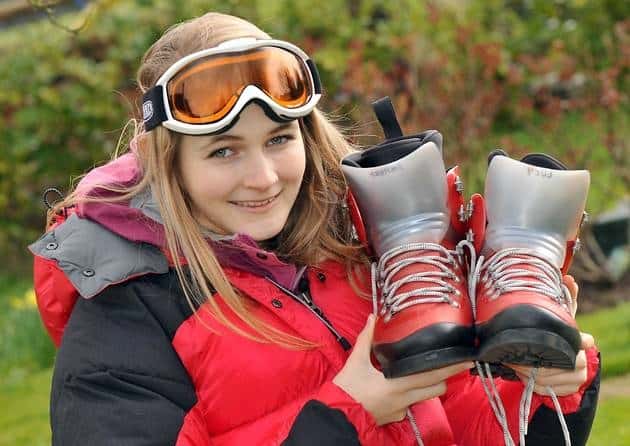
Lucy Shepherd
Lucy Shepherd is an adventurer who has a love for snow. She has completed a number of expeditions including spending 10 weeks in Svalbard. You can follow Lucy on Twitter, Instagram
What is your Arctic experience?
I love pulling pulks! I’ve just got back from a much shorter Arctic expedition than I would normally do – only 5 days out in the field because time was limited but it gave me that yearly pulling pulk fix! Our goal was achieved and it was great to be out again.
Other pulk expeditions – climbing Denali last year involved pulling a homemade pulk up hill at altitude for a couple of months before ditching and moving onto the serious climbing! It was quite the workout!
Every time I head back to the Arctic I take a pulk, it’s the perfect environment for them. When I was 18 I spend 10 weeks pulling a pulk every day in Svalbard so they really became apart of me from then on. Since then, I’ve found myself returning to the Arctic almost every year for various expeditions, big and small. I am always training for more!
How did you train for pulling pulks?
The most recent expedition didn’t take any more additional training than I’d usually do. I like to maintain ‘expedition fitness’ and adjust slightly depending on the upcoming challenge. My regular routine is varied to try and get to most of all the muscle groups. Endurance is a big one, mentally and physically so little things like getting out and training long and hard when it’s the last thing you’d rather do, is great for those hard Arctic days when it’s down to you to make every decision, no matter how tired you are.
What tips would you give anyone needing to pull a pulk?
Don’t worry too much. It’s a natural movement if you let it be. Stand tall, use your poles with purpose and get a rhythm going. Maintaining good core is vital for everything from balance on the skis to preventing the pulk from jerking so get in those pesky planks and sit ups. The muscles used in the skiing can be replicated with lunges and hiking uphill with weight in a rucksack. This will act like the pulk weighing you down.
Pulking is quite easy to pick up and in my opinion, I think our bodies adjust well to it. After a few days of pulking, you’ll soon find your shoulders, thighs and core are stronger.

Jo Bradshaw
Jo Bradshaw is an experienced expedition leader who is working towards completing the seven summits for Place 2 Be. She has climbed Denali and is now in preparation for climbing Antartica’s highest peak. You can follow her on Twitter, Instagram and Facebook. Or donate to her cause here.
What is your Arctic experience?
I climbed Denali (Mt McKinley) in Alaska in June 2017 where you pull and carry all of your kit, so did 4 months of pulk pulling expedition training before I went out there. I’m also planning to climb Mt Vinson in Antarctica in the next 2 years where we will also be pulling pulks so more tyre training will be on the cards for that too.
How did you train for pulling pulks?
I trained hard! It was a variety of tyre pulling, climbing (prussiking up a rope), core and body strength work, running and general walking. Always good to have a mixture but I always say, train to type, so the tyre pulling took centre stage for this expedition and it really paid off.
What tips would you give anyone needing to pull a pulk?
As mentioned above, train to type so make friends with a tyre, give it a name and go pull it, a lot! I was given a 22kg tyre which I named Dave (from David and Goliath), and starting pulling ‘him’ around the New Forest and up hills in North Wales and anywhere I was working on DofE expeditions too. If I was at home I would head to the New Forest 3-4 times a week and do a variety of long pulls or shorter faster sessions with the tyre. Finding steep hills in N Wales or even near Goodwood was a great help and I found that grass and tarmac are the hardest to pull on due to the friction.
Either get a specific harness or, for me, attaching the tyre ropes to my climbing harness which I put on with my backpack over the top was the best. On Denali you put a cord around the back of your expedition pack and attach the pulk ropes to that so it was very similar.
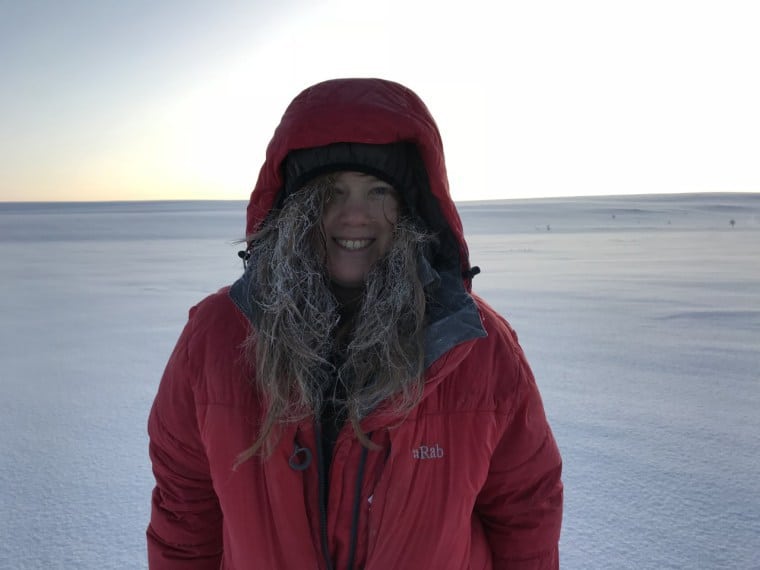
Seanna Fallon
Seanna Fallon is a passionate fundraiser and blogger. She joined an all-female team to attempt to cross the Finnmark Plateau right in the heart of winter, facing temperatures as low as -32. You can follow her on Twitter and Instagram.
What is your Arctic experience?
I set out with a group of Love Her Wild women to cross the Finnmark Plateau in Arctic Norway on cross-country skis. It was supposed to be a 2 week expedition, covering 160km, but unfortunately it was cut to 9 days following hugely challenging weather conditions, a medical evacuation, and my poor fingers getting a third degree frostbite. It was January, and while we were there, the sun emerged for the first time in 3 months, which brought our local guide to tears. But it meant working with short daylight hours, not to mention the erratic weather conditions that ran the gamut, with temperatures from -5 to -32, wind, snow, sun and beautiful stillness at different points in the expedition.
We dragged all our gear behind us on our pulks, which were between 30-50kg, with our food, clothes, fuel, camping equipment, and not forgetting the 18kg of dog food for our accompanying husky, Snø!
We were camping in a new spot each night as we traversed the Plateau, where we would rest from a tough day of skiing (and a lot of falling over) by watching the Northern Lights above our tents, then curling up in the sleeping bags, trying to stay warm.
I’m not in training for any more cold expeditions just yet, but I would like to do one in the future. Despite the huge challenge and discomfort, the expedition posed, I felt so happy and alive in that environment. Because of my frostbite, I’m supposed to avoid the extreme cold for at least a year, but after that, who knows! I dream of doing Antarctica and maybe even reaching the South Pole, but the costs are pretty prohibitive without sponsorship.
How did you train for your pulk pulling expedition?
I trained a lot, but was never sure if I was doing the right thing. However what I did do really paid off. My main focus was weights and strength training. I did a huge amount of work with my legs, back and core, but underestimated how much I would need my arms for using the ski poles and didn’t train them enough.
I did a bit of work on the cross-trainer at the gym as I thought it would mimic the muscle patterns of skiing. Ran and hiked, and spent some time dragging a tyre around the park on an upper body harness in preparation for the pulk. I’m not actually sure how useful that was, because the tyre is so much lighter than the pulk, but I definitely enjoyed doing it and it was a great way to meet new people as everyone stops to talk when you’re dragging a tyre! What I did find useful was pulling the prowler at my gym, a piece of gear that you can pull behind in the same way but you can load with weights. I was dragging my bodyweight up and down the sprint track, and I loved it!
What tips would you give anyone needing to pull a pulk?
Full body training will help, and strengthen your core, back, legs and arms. But really, it falls into place when you’re out there doing it for real. On day one, the entire team was toppling over, pelting down hills with no control, struggling on the inclines, and getting frustrated. But that’s just part of the process, and I promise it gets easier. After a couple of days you become quite comfortable dragging the pulk, no matter what the terrain. Yes, it can still be challenging, yes, you will probably still fall from time to time, but you will feel at peace with it pretty quickly.
Thank you Wendy, Jo, Lucy and Seanna for taking the time to answer these questions! No doubt anyone going on a pulk pulling expedition will be gratefull for the insight!
If you found this post helpful, follow my blog and adventures on Facebook, Twitter and Instagram. Or you can subscribe to my YouTube channel. I give all my advice out for free on my website. If you want to say thanks, you can buy me a coffee!
Any women reading this? I set up Love Her WIld – a women’s adventure community….we organise exciting adventures all over the world for you to join. Find out more – check out our private Facebook page.

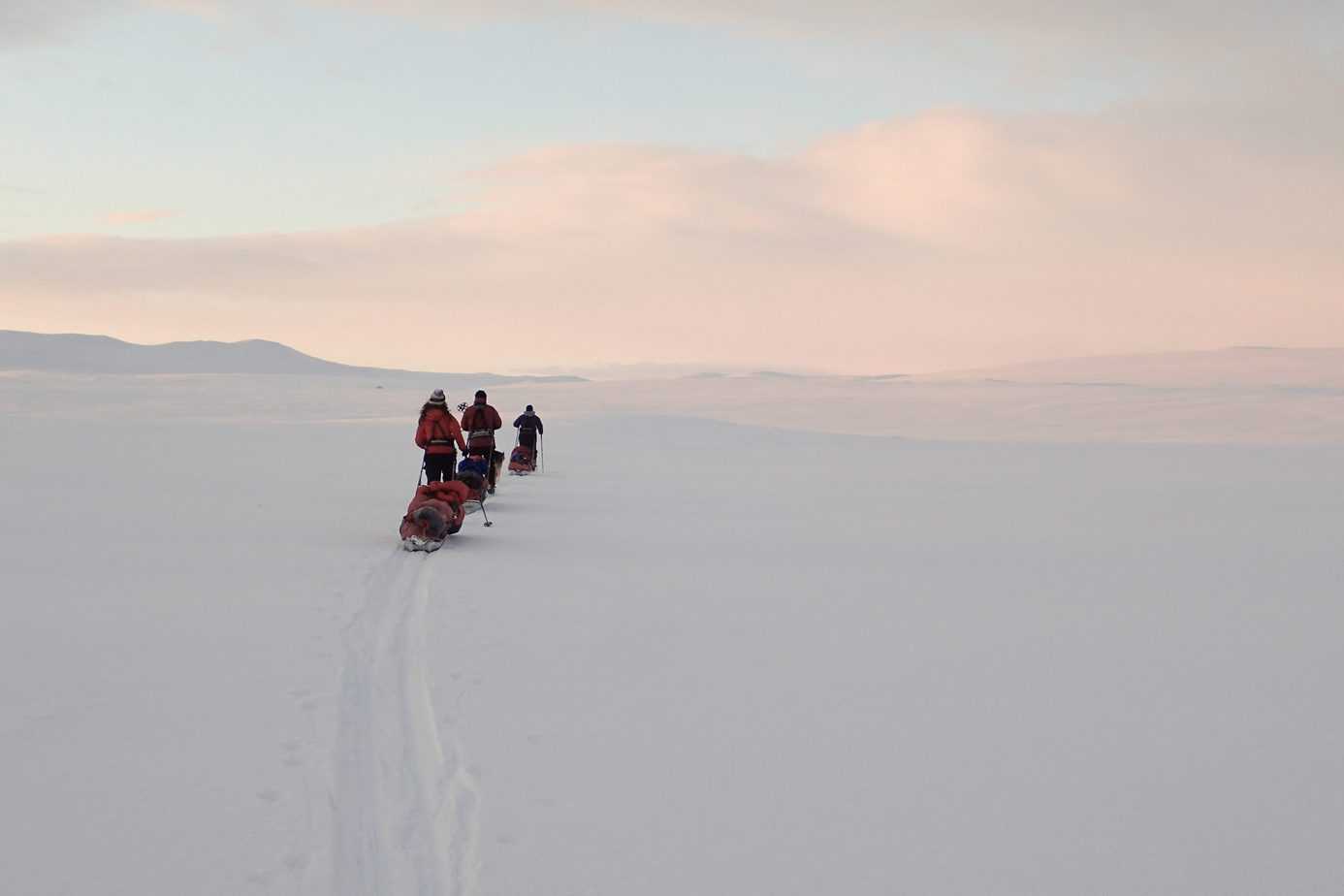




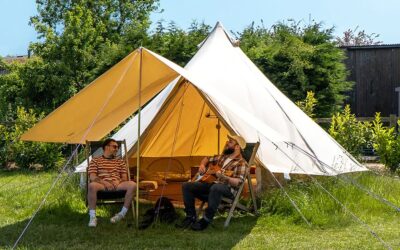
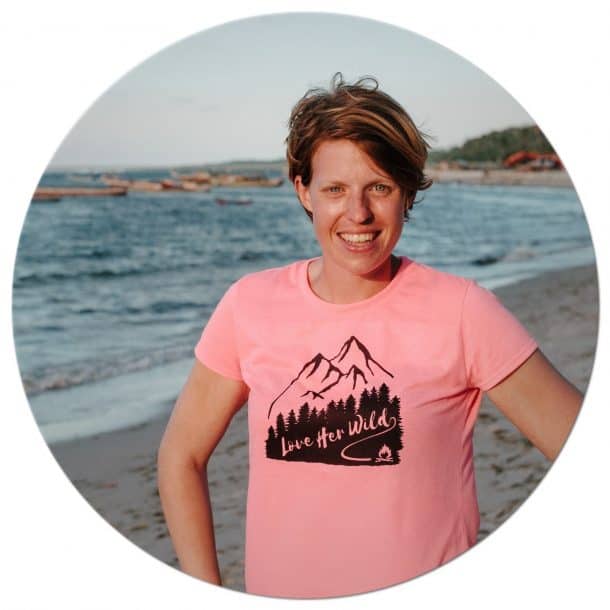
Hi. I’m looking for advice on tyre pulling workouts/ training plans. I’m a runner and I understand run programs… long run, tempo, Fartlek, easy etc but what would you advise for tyre workouts in prep for pulk pulling? What constitutes a long run/pull? Should I be loading the tyres with weights and doing a faster session? No idea, just winging it at the moment and there doesn’t seem to be much online? Any advice and links to resources would be appreciated. Thanks.
I’m not an expert in this area but would recommend reaching out the adventurers who have done significant pulk expeditions as they’ll be able to give you better advice. Good luck 🙂